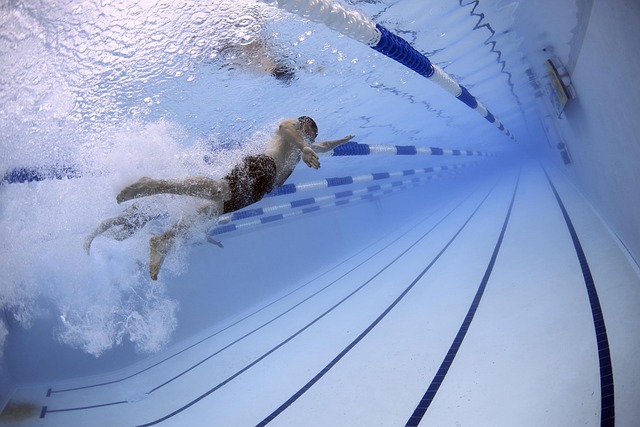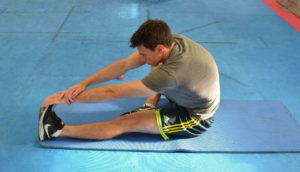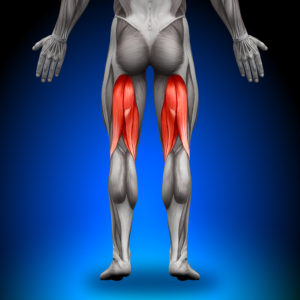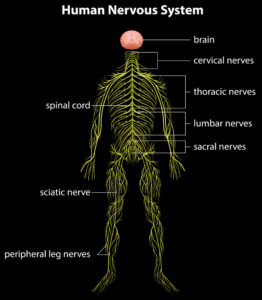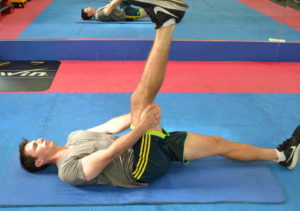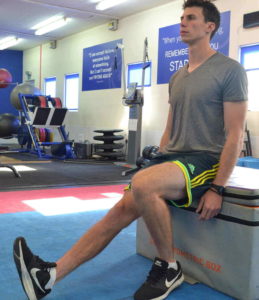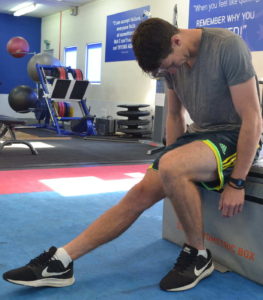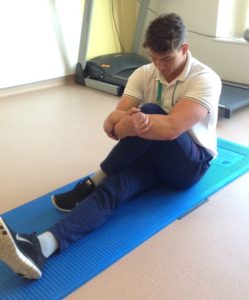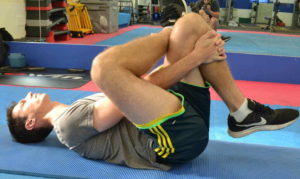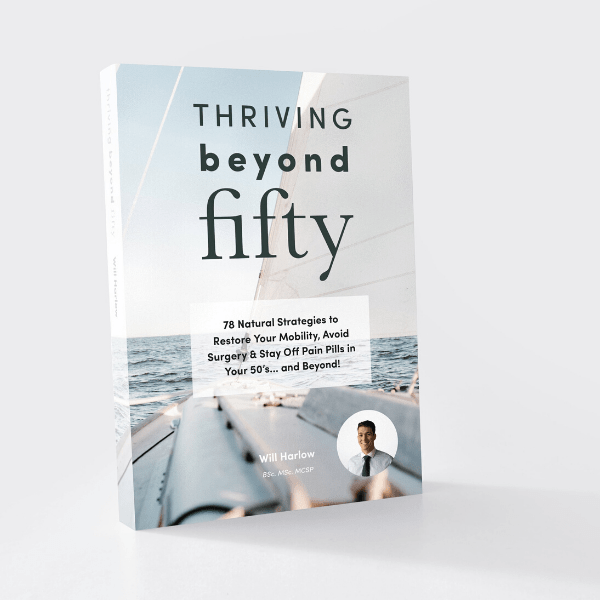When sciatica is causing you pain, you may have no choice but to avoid your everyday activities. As frustrating as this can be, it’s often necessary to aid recovery and prevent further damage.
This article will explore the activities to avoid with sciatica pain, descriptions of why you should avoid them, and some alternative activities that you can engage in instead.
This article will give you:
- A list of activities to avoid when you have sciatica pain, and why you should avoid them
- A list of alternative activities, or variations of the same activity, to engage in which have been shown to reduce sciatica and prevent flaring up your pain.
Sciatica pain is not always constant; it can flare up, or die down, intermittently. Don’t be put off by some of the categories we look at – these are not hard and fast rules; like with any health issue, not everything is black and white.
This article addresses what activities to avoid when sciatica pain is flaring up to ensure you do not aggravate the problem. You’ll notice a theme running through this article; most activities to avoid are those I like to call “twisty”, “lifty”, “jolty” or “bendy” – I only use extremely technical terminology on my page! Whilst some of the activities covered may seem obvious, you’d be surprised how many people end up exacerbating their pain by attempting to push through and partaking in the following activities.
Before we dive in, please be aware that we are part of the Amazon Affiliate programme. This page may contain Amazon affiliate links, so if you choose to purchase a product for your sciatica that we recommend through a link on this page, we will receive a small commission at no extra cost to you. This helps us keep Overcome Sciatica alive! Thank you for your support. Please be assured that we only ever recommend products that we truly believe can help.
Activities to Avoid with Sciatica: Which Types of Exercise Should I Avoid?
Hear me out, this is most certainly not me saying you should avoid ALL exercise; rather it is quite the opposite.
It is no secret that a huge part of my approach as a sciatica specialist is providing people with the right exercises. However, it is equally important that I steer you away from the wrong exercises to avoid you exacerbating your pain.
My aim as a physical therapist is to get my patients to be able to resume the activities they love. But when sciatica pain is present, it is important to listen to the body and avoid activities that cause an exacerbation in order to prevent irreversible damage.
Here are some activities to not necessarily avoid but to be CAREFUL with when you have sciatica pain:
#1: Weightlifting
Good form is vital when weightlifting.
When performing any weightlifting move, you must prevent hyperextension by ensuring you are not rounding your back.
However, when sciatica pain is present, you must avoid lifts that cause excessive flexion, too. Excessive flexion can exacerbate strain on the spine and the sciatic nerve.
Exercises such as bent-over rows, good mornings, deadlifts, and squatting all involve an element of flexion and you might be better avoiding these activities when you have sciatica pain. Adding weight to these movements increases the pressure placed on your lower back, often causing pressure on your sciatic nerve.
Many lifting movements require you to bend down. These lifts can target the hamstrings and the back; however, the sciatic nerve runs down your back and down the hamstrings and when we bend over or down, we may also put a stretch on the spinal cord, which in turn stretches the sciatic nerve.
When sciatic pain is present, I recommend avoiding flexion-based exercises altogether to prevent unnecessary strain.
#2: Core exercises
A strong core can do wonders for preventing sciatica, as strong back muscles offer greater support for the spine.
However, the myth that a “strong core” solves all back problems has infiltrated the field of physiotherapy – and is totally unfounded. Back pain and sciatica run far deeper than just core muscle weakness.
It is worth noting that some of the exercises we perform to achieve a “strong core” can often aggravate sciatica, which trumps any long-term benefit. For example, core exercises can often be “jolty” and involve repetitive flexion. Crunches and sit-ups flex the spine, putting pressure on the sciatic nerve which provokes pain.
Exercises which target the obliques, the muscles running down the side of our abdomen, should also be avoided. These exercises, like Russian twists or windshield wipers, involve twisting – which puts stress on the spine and can compress the sciatic nerve.
I have found that when people with back pain and sciatica did lots of core work, even if they were able to completely isolate the muscles most involved in supporting posture, they still saw only a questionable improvement.
Exercises where both legs are off the floor are also activities to avoid with sciatica pain. These exercises, such as double leg lifts and leg circles, shift all weight into your lower back and can often stretch the sciatic nerve which will increase sciatica pain.
For greater explanation of why core exercises can aggravate sciatica pain, check out the following article of mine: https://www.howtogetridofsciatica.com/core-training-back-pain-sciatica/
#3: Running
Some people may be able to continue to run with sciatica. However, for many people, runnings is an activity to avoid with sciatica pain.
When running, we often take long strides which can stretch the sciatic nerve. Running can also cause pain through impact, as the force of pounding the pavement can reach the spine. This jolts the discs and vertebra and often makes sciatica worse.
That being said, walking is usually a great exercise for sciatica. Walking offers aerobic exercise, without unpredictable and high-impact movement. Walking boosts endorphins, which can reduce pain and inflammation. The best advice for most people is to lay off the running and opt for an equally rewarding, but far less pain inducing, walk.
#4: Swimming
Swimming has built up a reputation as one of the best forms of aerobic exercise, especially for those wanting to relieve the pressure they feel on their joints during on-ground aerobic exercise. However, the horizontal position necessary for swimming can still apply pressure to the back, despite the support offered by the water buoyancy. With breaststroke, the lower back is extended, which might not be a good idea for those who have sciatica as a result of spinal stenosis.
Front and back crawl require you to twist your torso, whilst front crawl also requires you to twist your neck when coming up for air; both motions can apply strain to the spine. Butterfly utilises dynamic movement which have the potential to jolt the spine. All of these strokes are activities to avoid with sciatica pain for some people with this problem.
The best exercise that can be done in the water is often walking up and down in the pool. Submersion in the water takes away 50% of your body weight, while walking against the water provides resistance which helps to rebuild strength. This is often a great place to start for people with sciatica.
#5: High-impact, team and racket sports
High intensity sport often involves jarring, twisting, bending and overall unpredictable movement which puts sharp pressure on your spine and can irritate the sciatic nerve. Overall, any sport, “extreme” or otherwise, that involves a lot of twisting and rapid body contortions should be avoided by people with active sciatica.
The same applies to team sports such as rugby and football which require agility and unpredictable movement which can jar the spine. Racket sports are another nemesis when it comes to sciatica. As we addressed with Russian twists, rapid twisting of the torso can easily aggravate sciatica, making tennis and squash particularly dangerous. Golf and hockey compromise the spine during hunching over, with both sports requiring powerful swings which rapidly twist the spine and jolt the sciatic nerve.
You can read an article here that provides guidance about returning to sport when you have sciatica.
#6: Gardening
Gardening is not only great for maintaining a lovely-looking outside area, but it can also be a great source of exercise. Nevertheless, as most gardening activities involve tending to items on the floor, gardening requires a lot of bending down. This flexes the spine and can put pressure on the sciatic nerve, which can cause irritation. Gardening is often an activity to avoid with sciatica pain.
It’s not all bad news for your garden; many people find they can still keep their lawn in order even with sciatica. Mowing the lawn allows you to remain in an upright position, meaning the sciatic nerve is not stretched. Make sure your lawn mower handle is at hip height or higher, preventing you from hunching over or bending down to reach it. When manoeuvring your mower, ensure you turn your whole body in unison with the mower to prevent rotating from the waist and twisting the spine.
#7: Too much bed rest
This is a tricky one. Sciatica can cause extreme pain and discomfort. For a lot of us, bed rest offers an enticing cure when we are suffering.
However, remaining inactive, in a horizontal position, for extended periods of time can be detrimental to your sciatica. Laying down for extended periods of time can induce marked changes in mechanics of your spine, along with the muscles that support and strengthen your spine.
Sciatica flare ups can be debilitating, and rest may be the only source of relief. But it is important not to stay in bed for more than you normally would.
Sleep is one of the most important processes for a successful recovery, especially when a flare up is brought on by overactivity or strain. However, too much inactivity can be counterproductive. Bed rest may be just what the doctor used to order, but the modern recommendations have changed. As a specialist physiotherapist who wants to protect your spine, it’s certainly not what I recommend to most people.
#8: Ignoring occupational health
Maybe less of an activity, and more of a behaviour. Nevertheless, these headings are things we want to avoid doing with sciatica pain – and ignoring occupational health is most certainly something we want to avoid.
Occupational health professionals and practices are well-established in the workplace for good reason. Their work is incredibly important, especially for those struggling with sciatica pain.
Here are some things your Occupational Health team might mention to pay attention to:
Using the wrong work chair
We don’t always get a say in the conditions we work in. Therefore, it is extremely important to optimise your working environment to the best of your ability to protect yourself from inducing sciatica.
Those working at home have the opportunity to engineer their environment to a greater degree than those outside of the home; this is an opportunity you should capitalise on. Purchasing an ergonomic chair is an excellent way to prevent sciatica pain by optimising support for your back, even when sitting still for extended periods of time. The following features should be considered:
- Swivel: Having a chair that swivels prevents the need to twist your spine when reaching or turning to speak to others
- Adjustable head and backrest: These allow you to reduce the weight on your neck and lower back; a recline between 110° and 130° for your chair back offers the lowest pressure for your back
- Adjustable chair depth: This allows you to adjust the degree of support for your thighs, a notable area for sciatica pain
- Chair height: Your knees should be at a 90° angle, with feet flat on the floor
Manual lifting
Over a third of workplace injuries are brought on during manual lifting. Similar to deadlifts, you should avoid lifting heavy objects at home and at your workplace. Lifting heavy and awkwardly shaped items will aggravate the sciatica pain by putting strain on the spine and the supporting muscles.
Nevertheless, if you do need to lift something, at home or at work, there are safe ways to do this. Follow the guidance below to prevent inflaming your sciatica pain.
- Plan: how to execute your lift. Can you get help from someone else?
- Legs: make sure to focus the weight of the lift in your legs
- Posture: keep your back strong and upright
- Hug: the load to your chest, centring your weight to maintain your balance
Exercises to avoid with sciatica pain:
The seated hamstring stretch
Have you ever been told that you need to stretch your hamstrings to help the pain at the back of your leg?
Maybe your personal trainer, physiotherapist or even doctor told you to stretch your legs to help with your bulging disc?
Well, if you’ve been doing the above stretch, there’s a good chance that you’ve been making the sciatica WORSE, not better!
The hamstrings are a muscle group that sit at the back of the leg.
They are certainly at risk of getting tight for lots of people – especially those who sit for long periods of the day like office workers. They are also often tight in people who play sports.
The hamstrings are depicted above in red.
If someone sustains a hamstring injury, often it is the correct thing to do to stretch the hamstrings.
However, if you are suffering with sciatica, this exercise is definitely one to be avoided.
This is the most crucial of the exercises to avoid with sciatica because it’s the one that I see patients doing all the time before they come to see me.
The reason people start to do this stretch actually seems quite sensible – if you have tightness at the back of your leg, and the hamstrings are known to get tight, surely it makes sense to stretch them?
However, in this case, that logic is definitely wrong!
Although someone with sciatica is likely to feel that the pain is down the back of the leg, with sciatica it isn’t the hamstring that’s causing the pain; it’s the sciatic nerve.
You see, the sciatic nerve runs under the hamstrings, which is why it often FEELS like the hamstring itself that is causing the pain in sciatica.
So when you stretch in this way, it probably won’t help to alleviate the pain.
It is actually likely to aggravate your symptoms. I’ll explain why now…
If we look at the nerves in the body, they are all connected. The spinal cord, which runs between the bones in our spine, branches off to form every single nerve in the body.
This includes the sciatic nerve.
When we slump forward and reach for our toes, like in a hamstring stretch, we are actually putting a STRETCH on the spinal cord, which in turn STRETCHES the sciatic nerve.
When you have sciatica pain, your sciatic nerve is probably already inflamed and painful.
This inflammation is what causes “sciatica” – which is the medical term for “pain in the leg related to a nerve”.
And there is one thing that has become clear in the medical profession: Nerves hate to be stretched!
When you stretch a nerve, it will complain by increasing its sensitivity and giving you more pain than before. This pain can run all the way from your back to your toes.
The action of putting the sciatic nerve on a stretch is actually a “provocation test” used by doctors and physiotherapists to diagnose sciatica.
It is called a provocation test because it PROVOKES symptoms; it definitely doesn’t make them better!
You can see one of the nerve provocation tests to assess for sciatica below:
Looks a lot like the hamstring stretch from the above pictures right??
This is why we need to avoid stretching the hamstrings – because we inadvertently stretch the sciatic nerve as well.
Other exercises to avoid with sciatica:
There are certainly other variations of this hamstring stretch that you need to avoid, too.
A lot of these variations are present in exercises classes, like Yoga and Pilates.
Now I’m not saying that you need to avoid Yoga and Pilates; I actually think these are fantastic methods of returning to full fitness after sciatica.
Myth Busted: It isn’t the core strengthening in Yoga and Pilates that helps your back pain and sciatica – read all about why in this post HERE.
It’s just some of the stretches within these classes can put you in a position that is similar to the hamstring stretch we talked about before, and this can aggravate your symptoms.
One of these positions and another exercise to avoid with bulging discs is the “downward dog”:
This position almost flips the hamstring stretch upside down, and although it looks different, it is still putting a stretch on the hamstrings.
You may find that bending forward like this is painful anyway, as lots of my clients do.
Another commonly prescribed exercise to avoid with sciatica is this variation of the hamstring stretch, shown here:
The above stretch will probably feel absolutely awful for you if you are suffering from sciatica right now!
You should definitely avoid this exercise if you have sciatica. It is yet another variation of the activity to avoid with sciatica that we spoke about earlier, just with you on your back instead of sitting.
This video shows the exercises to avoid with sciatica – even if your doctor or physio said otherwise:
Hopefully now you can see why stretching the hamstrings has to be the number one exercise to avoid with sciatica.
I hope this will be enough of an explanation for you to take it OUT of your own treatment plan!
But What Else Should I Avoid If I Have Sciatica?
Here are some more of the exercises and activities to avoid with sciatica pain from a bulging disc:
- Straight-legged sit-ups
These put extra, unwanted stress on the spine and also place tension on the sciatic nerve. Avoid these at all costs while suffering from sciatica. - Heavy Squats
While squats aren’t necessarily a “bad” exercise, when you have sciatica, they may place strain on the lower back and increase disc pressure – making sciatica worse. - Straight-legged Deadlifts
Straight leg deadlifts (or Romanian Deadlifts) are actually good for your back… IF performed correctly – but one slight mistake and you can make a disc bulge worse. They also put a stretch on your hamstrings – which is exactly what we want to avoid as discussed in this article!
Now let’s discuss options for replacing the hamstring stretch with an effective alternative.
Try These Sciatica Exercises Instead!
The exercises provided on this page for informational purposes only and are not designed to be a ‘prescription’ of any kind. Be sure to check with your healthcare provider before you begin any new exercise programme.
So now we know that hamstring stretches are exercises to avoid with sciatica, what can we do instead?
Let’s talk about some of the better exercises for sciatica – ones that aren’t likely to make symptoms worse.
There is a very effective exercise to replace the hamstring stretch with, which is in some ways similar but the subtle differences make it a completely separate technique.
The exercise you could replace it with is called “Sciatic Nerve Flossing”.
Nerve flossing is a technique which relates to the fact that nerves have to run through very tight spaces to get to their target limb or tissue.
Along their course, they can get trapped or pinched, which directly causes irritation. This irritation is felt as sciatica.
If we can perform specific movements which “floss” the nerve safely through these tight spaces, we can help it to “glide” more freely through these gaps, which can dramatically reduce symptoms!
Below demonstrates how to perform this nerve flossing technique:
Please note: This exercise is not suitable for all. Check with your doctor before beginning any new exercise programme for sciatica.
Start off perched on the side of a seat or bed. Extend your painful leg in front of you. Lift your chin up, and as you do so, bring your toes up towards you at the ankle while keeping the leg straight.
Then, drop your chin down to your chest while also dropping the toes towards the floor as shown in the second picture.
To perform this exercise, simply alternate between the first and second position shown.
Here is a video of this action in motion. The lady doing it has her foot lifted off the floor, but one can keep their foot down if they’d rather:
What Other Exercises Can I Do for Sciatica?
Along with the nerve flossing techniques that I have described above, there are other stretches you can do that can help sciatica.
Even though stretching the hamstrings is not advisable when you have sciatica, that doesn’t mean you won’t benefit from stretching other muscles in the legs, like the gluteals, piriformis and quadriceps.
Let’s have a quick look at some easy stretches for these muscles below.
Just a quick reminder: the exercises below are not suitable for everyone. Get checked by your healthcare professional first. Remember to STOP any of these stretches if they make your symptoms worse at any point!
Option: Try Stretching the Opposite Leg
The video below demonstrates a hugely effective alternative to the sciatica exercises to avoid and is one that I prescribe often. Again, it will not be suitable for everyone so be sure to get checked over by a doctor BEFORE trying this exercise:
Gluteal Stretch
Sat on the floor as shown, pull one knee across your body towards the opposite shoulder and hold for 30 seconds.
Repeat this a few times per day on each side.
Piriformis Stretch
Lying on the floor as shown, cross the leg to be stretched over the other leg.
Now, bring both knees up towards your chest. You should feel a stretch in your buttock. Hold for 30 seconds.
Quadriceps Stretch
A runners favourite – whilst standing, bend the knee that is be stretched and grasp the foot in your hand.
You should feel a stretch at the front of your thigh. Hold for 30 seconds.
You can see a more in-depth description of these stretches by clicking HERE.
What Else Can I Do for Sciatica, Other Than Exercises?
This is a great question. Whenever treating this kind of problem, sciatica exercises are only ONE part of the equation.
I would always take a holistic approach when treating anyone with this kind of problem. This holistic approach will involve looking at diet, exercise, general health and whether there are any products I can recommend to help the problem get better faster.
Here are some of my top tips:
#1 – Cut Walking Distance (Or Take Regular Breaks)
While walking will be good for sciatica, walking upright for extended periods of time can aggravate the symptoms of sciatica and cause increased pain, no matter how many sciatica exercises you include in your routine.
My advice: Try to build in regular breaks into your walks. If you know there is a bench on your usual route, make an effort to stop and sit there for a while, even if you don’t feel you need to at the time.
#2 – Try a TENS Machine
Many of my patients with a bulging disc find that a TENS machine can help to relieve their symptoms, when used alongside sciatica exercises.
A TENS machine works by sending a small electrical signal into the muscles of the back, providing pain relief in many cases and loosening tight muscles.
Here is an example of a TENS machine that I commonly recommend to my clients:
You can also find an entire post I wrote showing you the best TENS machines on the market at the moment by clicking HERE.
#3 – Use a Muscle Rub
Creams for muscle pain can help some people to experience relief and they are handy to carry around to use when walking, if the exercises for sciatica can’t shift the pain.
Here is the cream that we usually recommend for people with sciatica pain:
#4 – Improve Your General Health
If you’re over-fifty and struggling to recover from sciatica, there may be some general health issues that are hampering your recovery.
While there are too many possibilities to list here, one thing that may provide benefit is getting a copy of my book, Thriving Beyond Fifty, and working through some of the tips and strategies in there for improving your general health and recovering from injury.
You can read more about the book below:
Top Tip: Grab a copy of my #1 Best-Selling book, Thriving Beyond Fifty for more health, wellness and recovery strategies!
Summary
When it comes to exercise, it’s best to start with smaller steps, and focus on staying active, before gradually build up intensity and endurance. Like I said before, exercise is incredibly important when dealing with sciatica, but it is essential to choose exercises and stretches which help the pain, not exacerbate it.
Take away lessons:
- Avoid “bendy”, “lifty”, “twisty” and “jolty” movements
- Sleep is your friend, but inactivity is your enemy
- Occupational health is there for a reason, use it to making working life pain free
- Sciatica exercises are important. But you must choose the right ones
- There are medical professionals, such as I, available to help – make use of us, the experience we have to share and the resources we provide!
References
1 Belavý DL, Armbrecht G, Richardson CA, Felsenberg D, Hides JA. Muscle Atrophy and Changes in Spinal Morphology. Spine. 2011;36(2):137-145. doi:10.1097/brs.0b013e3181cc93e8
2 Hendrick, P., Te Wake, A.M., Tikkisetty, A.S., Wulff, L., Yap, C. and Milosavljevic, S., 2010. The effectiveness of walking as an intervention for low back pain: a systematic review. European Spine Journal, 19(10), pp.1613-1620.
3 Health and Safety Executive. (2022). Risk at Work – Manual Handling. Health and Safety Executive. https://www.hse.gov.uk/toolbox/manual.htm
The information on Overcome Sciatica should never be used as a substitute for medical advice from a doctor. Never put into action any tips or techniques from Overcome Sciatica without checking with your doctor first. Please see full terms of use here.





